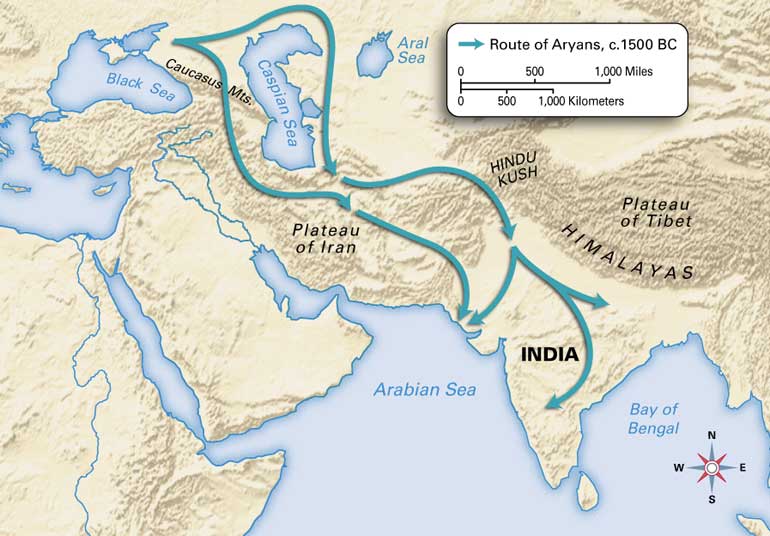
New research on Aryan Migration: Political Challenge to Hindu Nationalists Led by the Brahmins
In an interesting development in the ,research field, it has been now proved that the “Brahmins”-the priestly classes in India came from “outside” of India. This is strongly established not only by the study of the archaeology and philolog but also and most importantly by the study of DNA of both the modern people and the ancient ones. The international team of 92 scholars led by David Reich of the Harvard University has brought out these important facts in the open based on genetics.
This finding has many fallouts for India, particularly political and social revolutionary. The findings are claiming that the “Aryans” migrated to India from “Iran” in the first wave before 4000BC and then from the “Southern Russia” in the ,Volga in the second wave before 1000BC and the formation of the Vedas, based on the philological studies, is claimed to be during 1500BC to 500BC. It has been also conclusively established that the great urban civilisation of the Indus Valley preceded the “Aryan” migration which basically nomadic, rural, and pastoral societies.
According to Babasaheb Ambedkar, there is mixing of races in the present day India in terms of miscegenation, but it has also been proved by studies that the Indians stopped marrying outside their “case” before 1500 years leading to the formation of the enclosed classes, called caste. And hence Babasaheb Ambedkar claimed that there are two cultural races in India: the Aryans and Nagas. The predominance of the Nagas as the motif throughout India goes hand in hand with the advent and spread of Buddhism in not only Indi but also throughout the world. The Aryans followed the policy of “scorched earth” to destroy the Nagas is well established from the historical sources.
The Nagas is a separate cultural race as opposed to the “Aryan” race has also tremendous political significance in contemporary India.
The Hindu nationalists led by the “Brahmins” have been claiming that the Christians and Muslims have the origin outside India, but these new findings are also claiming that the “Brahmins” have also invaded India and they do not actually come from India as it is proved by the studies. In reality, the Brahmins always claimed their lineage with the British and not with the Indians, particularly, the south Indians were viewed as the different race. In a remarkable analysis, Babasaheb Ambedkar claimed that Nagas and the Dravidas are the same terms and south Indian languages, particularly Tamil, as the language of the Nagas. The Hindu nationalists in the form of Brahmins now have to establish their claim that they belong to this country. This is going to be politically challenging with the new research: how they can paint the Christians and Muslims as the outsiders and how they can claim that the Southern Indians are the different cultural reality.
Author – Mangesh Dahiwale



There is scientific evidence supporting the theory of Indo-Aryan migration from Europe to India. This evidence comes from multiple fields:
Genetics: Genetic studies have identified specific haplogroups like R1a, which are prevalent both in Europe (particularly in Eastern Europe and Central Asia) and in the Indian subcontinent. This points to a shared genetic ancestry and supports the idea of a migration or gene flow between these regions.
Linguistics: The Indo-Aryan languages spoken in India today, such as Sanskrit and its descendants, belong to the larger Indo-European language family. The structure and vocabulary of these languages show strong connections to ancient European languages, suggesting that they spread as people migrated.
Archaeology: Archaeological discoveries, including those at Arkaim, an ancient settlement in the Ural region of Russia, provide evidence of cultural practices that align with Indo-European traditions. These findings suggest that groups from this region might have moved southward toward India.
Cultural Practices: Similarities in rituals, religious concepts, and societal structures between ancient Indian cultures and those of early Indo-European societies offer further cultural evidence of a connection.
All of these fields converge to support the theory that there was an Indo-Aryan migration from parts of Europe and Central Asia into the Indian subcontinent.
…wish I could go back in time n kill the every single intruder within the subcontinent